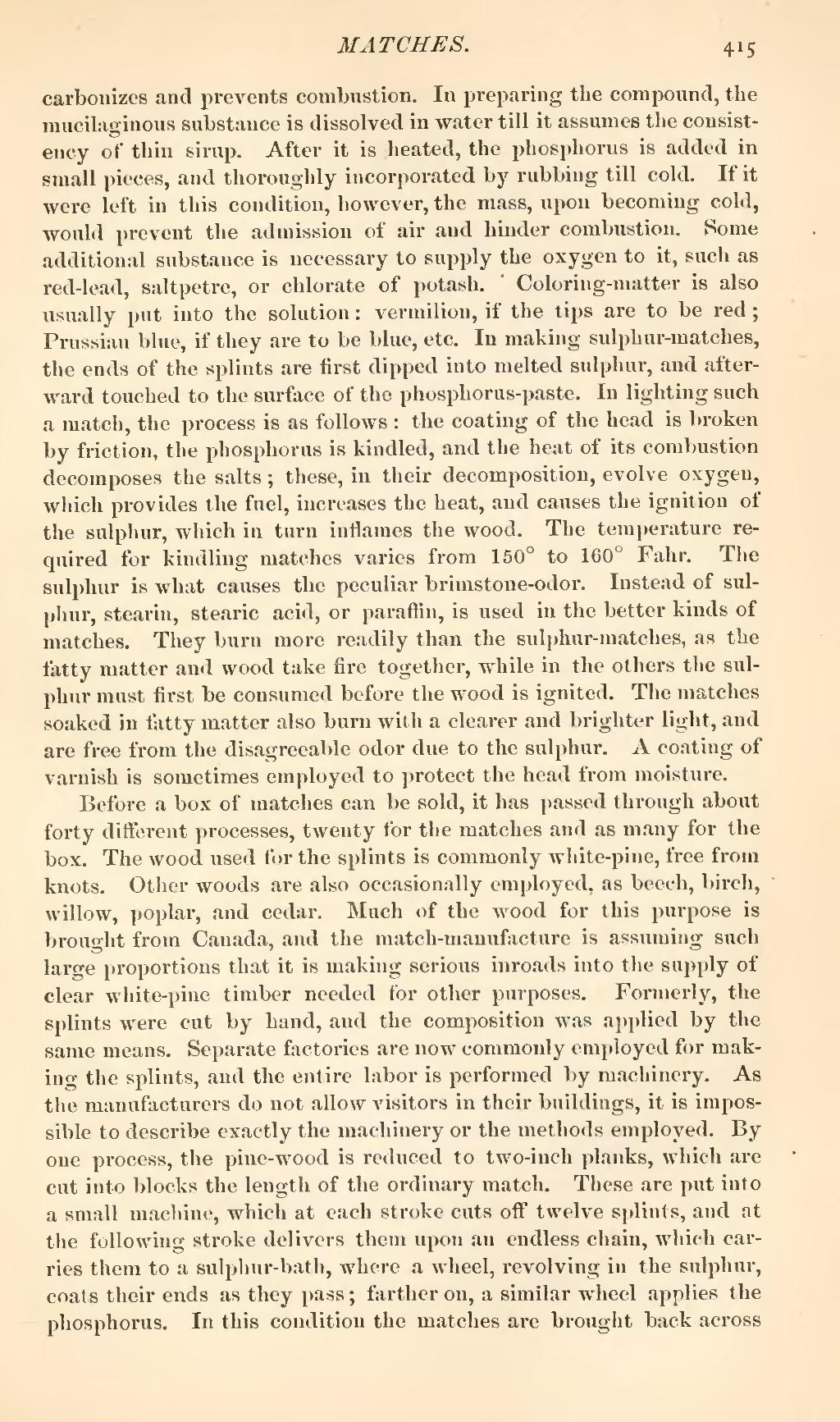carbonizes and prevents combustion. In preparing the compound, the mucilaginous substance is dissolved in water till it assumes the consistency of thin sirup. After it is heated, the phosphorus is added in small pieces, and thoroughly incorporated by rubbing till cold. If it were left in this condition, however, the mass, upon becoming cold, would prevent the admission of air and hinder combustion. Some additional substance is necessary to supply the oxygen to it, such as red-lead, saltpetre, or chlorate of potash. Coloring-matter is also usually put into the solution: vermilion, if the tips are to be red; Prussian blue, if they are to be blue, etc. In making sulphur-matches, the ends of the splints are first dipped into melted sulphur, and afterward touched to the surface of the phosphorus-paste. In lighting such a match, the process is as follows: the coating of the head is broken by friction, the phosphorus is kindled, and the heat of its combustion decomposes the salts; these, in their decomposition, evolve oxygen, which provides the fuel, increases the heat, and causes the ignition of the sulphur, which in turn inflames the wood. The temperature required for kindling matches varies from 150° to 160° Fahr. The sulphur is what causes the peculiar brimstone-odor. Instead of sulphur, stearin, stearic acid, or paraffin, is used in the better kinds of matches. They burn more readily than the sulphur-matches, as the fatty matter and wood take fire together, while in the others the sulphur must first be consumed before the wood is ignited. The matches soaked in fatty matter also burn with a clearer and brighter light, and are free from the disagreeable odor due to the sulphur. A coating of varnish is sometimes employed to protect the head from moisture.
Before a box of matches can be sold, it has passed through about forty different processes, twenty for the matches and as many for the box. The wood used for the splints is commonly white-pine, free from knots. Other woods are also occasionally employed, as beech, birch, willow, poplar, and cedar. Much of the wood for this purpose is brought from Canada, and the match-manufacture is assuming such large proportions that it is making serious inroads into the supply of clear white-pine timber needed for other purposes. Formerly, the splints were cut by hand, and the composition was applied by the same means. Separate factories are now commonly employed for making the splints, and the entire labor is performed by machinery. As the manufacturers do not allow visitors in their buildings, it is impossible to describe exactly the machinery or the methods employed. By one process, the pine-wood is reduced to two-inch planks, which are cut into blocks the length of the ordinary match. These are put into a small machine, which at each stroke cuts off twelve splints, and at the following stroke delivers them upon an endless chain, which carries them to a sulphur-bath, where a wheel, revolving in the sulphur, coats their ends as they pass; farther on, a similar wheel applies the phosphorus. In this condition the matches are brought back across
